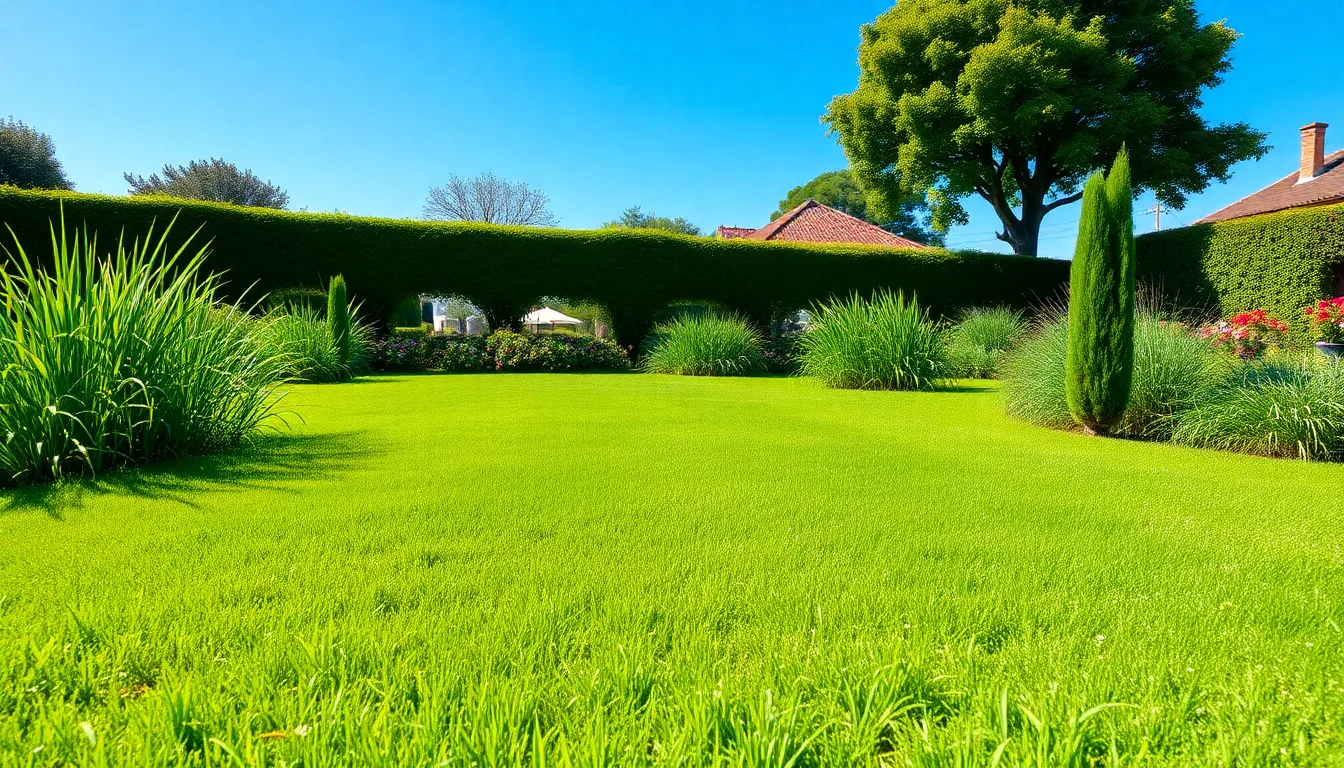Ever found yourself in a conversation about lawns and landscapes, only to realize you’re stuck on one little word? If you’ve ever wondered how to say “grass” in Spanish, you’re not alone. It’s a common query that can lead to some pretty entertaining misunderstandings. After all, who wouldn’t want to impress their friends with a little bilingual flair when discussing their backyard?
Table of Contents
ToggleUnderstanding the Word Grass
In Spanish, the word for grass is “césped.” This term specifically refers to the grass found in gardens and lawns. Another common word is “hierba,” which denotes grass in a broader sense, often including wild grass or herbs.
Usage of these terms differs based on context. “Césped” applies mainly to cultivated grass, while “hierba” can refer to various grasses or plant species. Recognizing the distinction enhances comprehension in conversations.
Examples show how these words integrate into everyday dialogue. For instance, “El césped está verde” translates to “The grass is green.” This sentence highlights the lush appearance of a lawn. Alternatively, “La hierba crece rápido” means “The grass grows fast,” emphasizing wild grasses or herbs.
Different Spanish-speaking regions may have unique words for grass. Some individuals use “pastura” to refer to pasture grass. Familiarity with these variations enriches communication and minimizes misunderstandings.
Pronunciation also plays a role. “Césped” is pronounced as “SEH-sped,” while “hierba” sounds like “YER-ba.” Mastering pronunciation aids in conveying messages accurately, especially in conversations.
Using these terms correctly reflects cultural nuances. Understanding when to use “césped” or “hierba” fosters better interaction in bilingual settings. Emphasizing accurate vocabulary builds confidence in speaking and engaging with others.
How Do You Say Grass in Spanish?

The word for grass in Spanish varies by context and region. Understanding these differences aids in effective communication.
Translation in Different Regions
“Césped” commonly refers to cultivated grass, particularly in gardens and lawns. This term is widely recognized across Spanish-speaking countries. In some regions, “hierba” is used more broadly, encompassing not just grass but also herbs. “Pastura” is another term, often associated with pasture grass in agricultural contexts. Regional dialects may further influence usage, with some countries favoring one term over another. For instance, in Mexico, “hierba” might be more prevalent in casual talks about landscaping.
Common Uses in Conversation
When discussing outdoor areas, people might say “El césped está verde” to indicate the grass’s condition. In more casual settings, one might ask for recommendations on care, such as “¿Cómo cuido la hierba?” Using these terms helps simplify discussions about gardening or landscaping. Conversations might also include regional sayings, like “La pastura está seca” when referring to drought conditions in fields. Understanding these practical applications enhances fluency and confidence in bilingual exchanges.
Related Vocabulary
Understanding related terms adds depth to conversations about grass. Specific vocabulary enhances clarity and interaction in discussions.
Other Plants and Vegetation
Césped and hierba relate to various plants and vegetation. For example, “arbol” translates to tree, contributing to landscape conversations. “Planta” refers to plant in general, while “flores” means flowers, enriching discussions about gardens. These terms encourage more engaging exchanges about nature. When discussing a garden, one might say, “Las flores son hermosas” to admire the beauty of flowers. Including these terms expands one’s ability to articulate ideas around greenery.
Expressions Involving Grass
Expressions involving grass enrich conversations. For instance, “tierra de nadie” refers to no man’s land, often used metaphorically in discussions. “Cortar el césped” translates to mowing the lawn, representing a common household task. In casual settings, saying “camino por el césped” highlights walking on the grass, making interactions vibrant. Using these phrases demonstrates fluency and familiarity, enabling fluid discussions with Spanish speakers. Communication improves when integrating these expressions effectively into dialogue.
Cultural Significance of Grass
Grass holds significant cultural relevance in many Spanish-speaking regions. Various terms for grass reflect different uses and contexts, emphasizing its importance in daily life and nature. For instance, “césped” denotes cultivated grass, often associated with well-kept gardens and parks. Many people value these green spaces for recreation and relaxation.
“Hierba,” on the other hand, reflects a broader concept, including wild grass and herbs. This term often surfaces in discussions about agriculture and gardening, highlighting the diverse applications of grass in culinary practices. In many cultures, herbs derived from grass, such as “hierba buena” (spearmint), play a crucial role in traditional dishes.
Regional variations deepen this cultural significance. “Pastura” represents pasture grass, which is vital for livestock farming in rural areas. Rural communities often emphasize the importance of well-maintained pastures for their livestock’s health and productivity.
Expressions involving grass enhance conversations. Phrases like “cortar el césped” (mowing the lawn) not only describe an action but also reflect a cultural appreciation for outdoor spaces. Maintenance of grassy areas signifies care for the environment and community.
Traditions and celebrations frequently incorporate grass. Many festivals feature grass as a natural element, symbolizing fertility and renewal. Communities gather on grassy fields for social events, underscoring the connection between grass and communal life.
Ultimately, understanding the cultural significance of grass leads to deeper connections in conversations about nature, sustainability, and pride in community spaces. Familiarity with these terms enriches dialogues and fosters appreciation for diverse landscapes across Spanish-speaking countries.
Understanding how to say “grass” in Spanish opens the door to richer conversations about nature and landscaping. By grasping the nuances between “césped” and “hierba,” individuals can navigate discussions with confidence and clarity. The regional variations and cultural significance of these terms add depth to everyday interactions, enhancing fluency in Spanish.
Incorporating related vocabulary and expressions not only improves communication skills but also fosters a deeper appreciation for the environment and community. Whether discussing lawn care or the beauty of wild grass, mastering these terms enriches the bilingual experience. Embracing this knowledge allows for more meaningful connections with Spanish speakers and a greater understanding of the cultural context surrounding grass in various regions.



